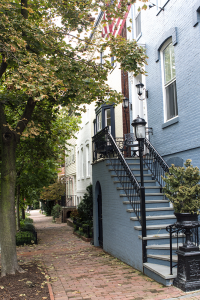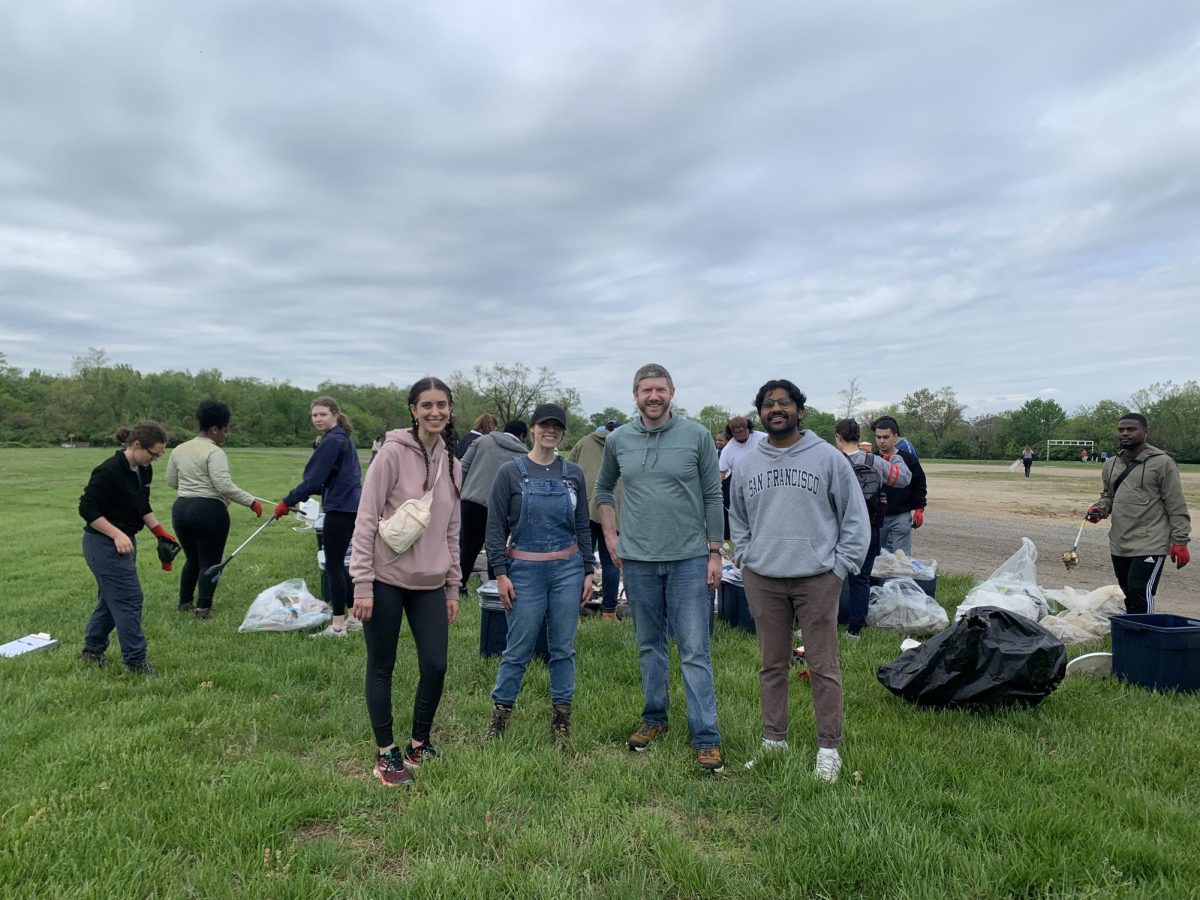
Georgetown filed the finalized the 2017-2036 Campus Plan yesterday after months of deliberation.
After months of deliberation, the university filed the finalized version of the 2017-2036 Campus Plan with the District of Columbia Zoning Commission for its consideration and approval yesterday, solidifying a plan that prioritizes upperclassman student housing renovations, allows the renovation or construction of academic spaces in four different parts of campus and permits the renovation or replacement of Yates Field House and Kehoe Field.
The plan also includes commitments to sustainability in new constructions and allows for expansions of MedStar Georgetown University Hospital, including a new surgical pavilion.
The Georgetown Community Partnership — consisting of university administrators, neighborhood representatives and students — approved the final iteration of the plan July 25 after reviewing approximately 75 edits suggested by the public.
The plan, which is the District’s formal structure for universities in residential areas to predict their future enrollments and developments, was published June 6 and available for a month long period of review until July 15.
During the period, the university asked students and community members to submit questions and comments through a formal, online feedback system and held several meetings to discuss feedback. The period for public comment was extended from July 6 to July 15.
The campus plan will take effect after the D.C. Zoning Commission holds hearings in January.
Vice President for Government Relations and Community Engagement Christopher Murphy (GRD ’98) said a plan to demolish a wing of St. Mary’s Hall was eliminated due to concerns raised during the evaluation period, but that most of the other alterations made to the plan were clerical in nature.
“The changes made to the draft plan were fairly modest,” Murphy wrote in an email to The Hoya. “This is a real credit to community, university and student leaders on the Georgetown Community Partnership whose work drafting the initial draft of the plan contemplated many of the concerns and priorities of the numerous stakeholders.”
The GCP was formed in 2012 as part of the implementation of the 2010 Campus Plan, following a lengthy legal battle between various Georgetown community associations and the university during the plan’s negotiations. The 2010 plan put into effect various policies unpopular with students, including a three-year on-campus housing requirement, the Student Neighborhood Assistance Program to monitor off-campus noise violations and construction of new residences — including Pedro Arrupe, S.J. Residence Hall — instead of prioritizing existing housing renovations.
The Georgetown University Student Association formed the “Let’s Not Get Screwed Again” petition in an effort to rally student support in spring 2015 around a new campus plan.
GUSA Chief of Staff Ari Goldstein (COL ’18), who helped negotiate the campus plan, said he is confident the final version of the plan will be approved because it was written through a consensus-based process.
“I expect the commission will be very happy to see that it’s a consensus document, submitted jointly by all the parties,” Goldstein said. “I’m not personally a part of the zoning commission process, but from what I understand it’s going to be smooth-sailing going forward.”
Goldstein said another significant change Georgetown made to the campus plan was codifying the role of two to three student leaders in the GCP steering committee so that it will be permanent over the next 20 years.
GUSA President Enushe Khan (MSB ’18), Reed Howard (COL ’17) and Mara Goldman (SFS ’19) currently serve as student representatives to the steering committee.
“It ensures that all the hard work we’ve put into the campus planning process over the past two years will be codified for the next twenty years,” Goldstein wrote in an email to The Hoya. “I’m confident that we won’t be shut out of the room again like we were during the process leading up to the 2010 Campus Plan.”
Khan said the plan solves many problems that arose from the 2010 plan.
“With the last campus plan, the biggest issue was the construction of the new dorms to accommodate additional students on campus,” Khan said. “We spent north of $70 million on the construction of those dorms and as a result, we have accumulated quite a large deferred maintenance log to the point where some of our upperclassman housing options were abysmal.”
Vice President of Planning and Facilities Management Robin Morey said the campus plan ensures that students will be part of the conversation in years to come and will also benefit students by elevating housing options.
“Students played a critical and constructive role in the development of the campus plan which commits to continued student engagement in ongoing conversations about campus and neighborhood life,” Morey wrote in an email to The Hoya. “Students will also benefit from the planned renovations in the existing residential housing stock making on-campus housing an attractive and competitive choice.”
Vice President of the Citizens Association of Georgetown Jennifer Altemus Romm said the plan received major support because of the engagement of the Georgetown neighborhood in the plan’s formulation.
“I was able to actively participate in drafting the new Campus Plan so there were no surprises when the plan was released in June,” Altemus Romm wrote in an email to The Hoya. “Through the GCP, the university was able to work with the community, the students and MedStar to address all issues. And in this same group we can collegially resolve problems as they arise. CAG is excited to move forward with the plan and we fully support it.”
Morey said the plan received the unanimous endorsement of Advisory Neighborhood Commission 2E, ANC 3D, the Citizens Association of Georgetown, the Burleith Citizens Association and the Foxhall Community Citizens Association.
“Since the draft plan was released in early June, response from community members from the neighborhoods surrounding campus has been overwhelmingly positive,” Morey wrote in an email to The Hoya.
Khan said successful cooperation on the plan between neighbors, administrators and students demonstrates how effective the GCP model is.
“I think certainly that this could be a model for other universities that are struggling with their process, American University being one for example,” Khan said. “Ultimately, we didn’t get screwed again. The students were really treated as partners in the process, and as a result we were able to come to a consensus agreement that benefited all parties, as opposed to one over the other.”




















